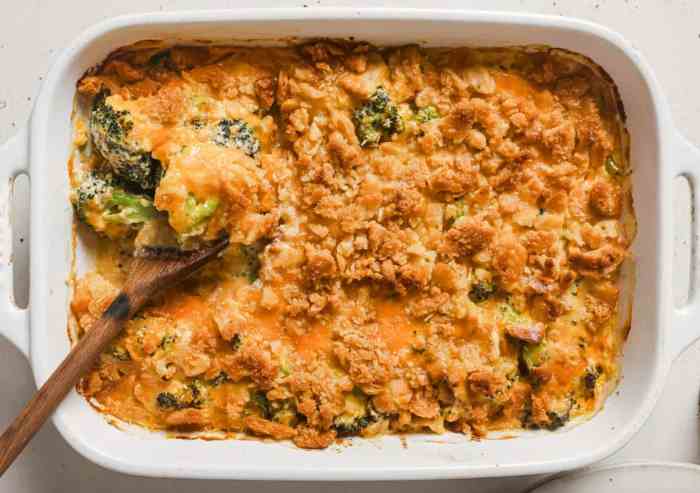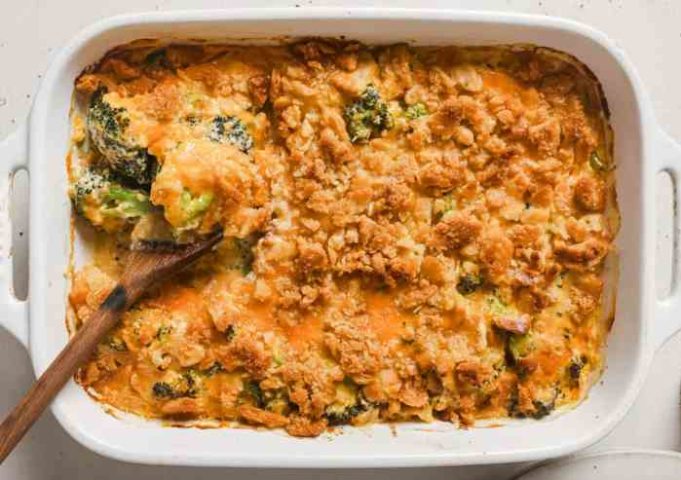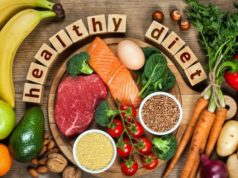A cheap diet plan doesn’t mean sacrificing nutrition or taste. It’s about making smart choices and maximizing your budget to create a healthy and satisfying eating experience. While misconceptions about “cheap” diets often center around their lack of nutritional value, there are plenty of affordable options that can provide all the nutrients your body needs. From vegetarian and vegan plans to Mediterranean-inspired cuisine, this guide will explore a variety of approaches to healthy eating without breaking the bank.
The key lies in understanding the fundamentals of nutrition, planning your meals strategically, and embracing affordable food choices. This guide will equip you with the knowledge and tools to create a cheap diet plan that suits your lifestyle and dietary needs.
Understanding “Cheap Diet Plan”
A “cheap diet plan” refers to a dietary approach that emphasizes affordability and accessibility, aiming to provide essential nutrients without breaking the bank. It’s not about sacrificing health or quality but rather focusing on budget-friendly food choices that support well-being.
Common Misconceptions About Cheap Diets
It’s important to address the common misconceptions surrounding cheap diets. Some believe that cheap diets are automatically unhealthy, lacking in essential nutrients, or leading to deficiencies. However, this is a generalization. Many cheap diet plans can be nutritionally balanced and provide the necessary vitamins, minerals, and fiber. The key lies in choosing affordable foods wisely and incorporating a variety of options.
Types of Cheap Diet Plans
There are various types of cheap diet plans, each with its own unique approach and focus. Here are a few examples:
- Vegetarian Diet: This diet excludes all animal products, relying heavily on fruits, vegetables, legumes, grains, and nuts. Vegetarian diets are often budget-friendly as these food groups are generally more affordable than meat and dairy.
- Vegan Diet: Similar to a vegetarian diet, veganism excludes all animal products, including eggs and dairy. It emphasizes plant-based foods, which are typically less expensive than animal-based alternatives.
- Mediterranean Diet: This diet emphasizes fruits, vegetables, whole grains, legumes, nuts, olive oil, and fish, with moderate consumption of red meat and poultry. Many of these food groups are readily available and affordable, making it a practical choice for budget-conscious individuals.
Key Factors for a Successful Cheap Diet
A cheap diet plan doesn’t have to be a compromise on your health or well-being. There are many affordable options that can help you reach your weight goals while still ensuring you get the nutrients you need. The key is to focus on a few important factors that can make all the difference in your success.
Budgeting and Meal Planning
It’s crucial to create a budget for your groceries and stick to it. Meal planning is essential to prevent impulse purchases and ensure you have healthy, affordable meals on hand.
- Create a weekly grocery list based on your meal plan: This helps you avoid buying unnecessary items and keeps you focused on your budget.
- Shop at discount grocery stores: Look for stores that offer lower prices on staples like fruits, vegetables, and grains.
- Buy in bulk: When possible, buy larger quantities of non-perishable items to save money.
- Cook at home: Eating out can be expensive. Cooking at home gives you more control over ingredients and portions, allowing you to save money.
- Plan for leftovers: Use leftovers for lunch the next day or freeze them for future meals.
Nutritional Balance
While focusing on affordability, it’s important to ensure your diet is nutritionally balanced.
- Prioritize fruits and vegetables: They are packed with essential vitamins and minerals and are generally affordable, especially when purchased in season.
- Choose whole grains over refined grains: Whole grains are a good source of fiber, which helps you feel full and satisfied.
- Include lean protein sources: These include beans, lentils, eggs, and poultry, which are generally more affordable than red meat.
- Limit processed foods: Processed foods are often high in calories, sugar, and unhealthy fats.
Affordable Food Choices
Eating healthy doesn’t have to break the bank. There are plenty of affordable food choices that can provide your body with the nutrients it needs. By focusing on whole, unprocessed foods, you can create a balanced diet without spending a fortune. This section will explore some of the most affordable food options within each food group and provide recipes to help you get started.
Sticking to a cheap diet plan can be tricky, especially when cravings hit. You might wonder if you can indulge in a little bubbly goodness while staying on track. The question of can you drink diet soda on keto is a common one, and the answer depends on your specific dietary goals.
Remember, finding affordable and sustainable options is key to making any diet plan work long-term.
Affordable Food Choices by Food Group
Here’s a breakdown of affordable food choices organized by food group, along with their nutritional benefits and recipe ideas:
| Food Group | Affordable Options | Nutritional Benefits | Recipes |
|---|---|---|---|
| Fruits |
|
|
|
| Vegetables |
|
|
|
| Grains |
|
|
|
| Protein |
|
|
|
| Dairy |
|
|
|
Sample Meal Plans
This section presents three sample meal plans for a week, each designed for a different dietary preference: vegetarian, vegan, and Mediterranean. These plans provide specific recipes and portion sizes, along with an estimated cost for each meal.
Vegetarian Meal Plan
This vegetarian meal plan focuses on plant-based protein sources, whole grains, and fresh produce. It includes a variety of flavors and textures to keep meals interesting.
Day 1
- Breakfast: Oatmeal with berries and nuts (1 cup oatmeal, 1/2 cup berries, 1/4 cup nuts) – $1.50
- Lunch: Lentil soup with whole-wheat bread (1 cup soup, 2 slices bread) – $2.00
- Dinner: Vegetable stir-fry with brown rice (1 cup brown rice, 1 cup vegetables) – $3.00
Day 2
- Breakfast: Tofu scramble with avocado toast (1/2 cup tofu, 1 slice whole-wheat bread, 1/4 avocado) – $2.00
- Lunch: Salad with chickpeas and tahini dressing (1 cup salad, 1/2 cup chickpeas, 2 tbsp tahini dressing) – $2.50
- Dinner: Vegetarian chili with cornbread (1 cup chili, 1 slice cornbread) – $3.50
Day 3
- Breakfast: Yogurt parfait with granola and fruit (1 cup yogurt, 1/4 cup granola, 1/2 cup fruit) – $1.75
- Lunch: Black bean burgers on whole-wheat buns (1 burger, 1 bun) – $2.75
- Dinner: Pasta with marinara sauce and vegetables (1 cup pasta, 1/2 cup marinara sauce, 1 cup vegetables) – $3.25
Day 4
- Breakfast: Smoothie with spinach, banana, and almond milk (1 cup spinach, 1 banana, 1 cup almond milk) – $1.25
- Lunch: Leftover vegetarian chili – $0.00
- Dinner: Veggie burgers with sweet potato fries (1 veggie burger, 1/2 cup sweet potato fries) – $3.00
Day 5
- Breakfast: Eggs with toast and fruit (2 eggs, 2 slices whole-wheat toast, 1/2 cup fruit) – $2.00
- Lunch: Salad with quinoa and grilled chicken (1 cup salad, 1/2 cup quinoa, 4 oz grilled chicken) – $3.50
- Dinner: Pizza with vegetables (1 slice pizza, 1/2 cup vegetables) – $4.00
Day 6
- Breakfast: Pancakes with fruit and syrup (2 pancakes, 1/2 cup fruit, 2 tbsp syrup) – $2.50
- Lunch: Leftover pizza – $0.00
- Dinner: Bean burritos with brown rice (1 burrito, 1/2 cup brown rice) – $3.25
Day 7
- Breakfast: Waffles with fruit and whipped cream (2 waffles, 1/2 cup fruit, 2 tbsp whipped cream) – $2.75
- Lunch: Leftover bean burritos – $0.00
- Dinner: Vegetable curry with brown rice (1 cup curry, 1/2 cup brown rice) – $3.50
Estimated Weekly Cost: $33.00
Vegan Meal Plan
This vegan meal plan excludes all animal products, focusing on plant-based protein sources, whole grains, and legumes.
Day 1
- Breakfast: Oatmeal with berries and flaxseed (1 cup oatmeal, 1/2 cup berries, 1 tbsp flaxseed) – $1.50
- Lunch: Lentil soup with whole-wheat bread (1 cup soup, 2 slices bread) – $2.00
- Dinner: Vegan stir-fry with brown rice (1 cup brown rice, 1 cup vegetables) – $3.00
Day 2
- Breakfast: Vegan tofu scramble with avocado toast (1/2 cup tofu, 1 slice whole-wheat bread, 1/4 avocado) – $2.00
- Lunch: Salad with chickpeas and tahini dressing (1 cup salad, 1/2 cup chickpeas, 2 tbsp tahini dressing) – $2.50
- Dinner: Vegan chili with cornbread (1 cup chili, 1 slice cornbread) – $3.50
Day 3
- Breakfast: Vegan yogurt parfait with granola and fruit (1 cup vegan yogurt, 1/4 cup granola, 1/2 cup fruit) – $1.75
- Lunch: Black bean burgers on whole-wheat buns (1 burger, 1 bun) – $2.75
- Dinner: Pasta with marinara sauce and vegetables (1 cup pasta, 1/2 cup marinara sauce, 1 cup vegetables) – $3.25
Day 4
- Breakfast: Smoothie with spinach, banana, and almond milk (1 cup spinach, 1 banana, 1 cup almond milk) – $1.25
- Lunch: Leftover vegan chili – $0.00
- Dinner: Veggie burgers with sweet potato fries (1 veggie burger, 1/2 cup sweet potato fries) – $3.00
Day 5
- Breakfast: Vegan pancakes with fruit and syrup (2 pancakes, 1/2 cup fruit, 2 tbsp syrup) – $2.50
- Lunch: Salad with quinoa and tempeh (1 cup salad, 1/2 cup quinoa, 4 oz tempeh) – $3.50
- Dinner: Pizza with vegetables (1 slice pizza, 1/2 cup vegetables) – $4.00
Day 6
- Breakfast: Vegan waffles with fruit and whipped cream (2 waffles, 1/2 cup fruit, 2 tbsp whipped cream) – $2.75
- Lunch: Leftover pizza – $0.00
- Dinner: Bean burritos with brown rice (1 burrito, 1/2 cup brown rice) – $3.25
Day 7
- Breakfast: Vegan omelet with vegetables (2 eggs, 1/2 cup vegetables) – $2.00
- Lunch: Leftover bean burritos – $0.00
- Dinner: Vegetable curry with brown rice (1 cup curry, 1/2 cup brown rice) – $3.50
Estimated Weekly Cost: $32.50
Mediterranean Meal Plan
This Mediterranean meal plan emphasizes fresh fruits, vegetables, whole grains, and healthy fats. It includes lean protein sources like fish and poultry.
Day 1
- Breakfast: Greek yogurt with berries and nuts (1 cup yogurt, 1/2 cup berries, 1/4 cup nuts) – $1.75
- Lunch: Tuna salad sandwich on whole-wheat bread (4 oz tuna, 2 slices whole-wheat bread) – $2.50
- Dinner: Grilled chicken with roasted vegetables (4 oz chicken, 1 cup vegetables) – $3.50
Day 2
- Breakfast: Oatmeal with fruit and nuts (1 cup oatmeal, 1/2 cup fruit, 1/4 cup nuts) – $1.50
- Lunch: Leftover grilled chicken with salad (4 oz chicken, 1 cup salad) – $0.00
- Dinner: Salmon with quinoa and asparagus (4 oz salmon, 1/2 cup quinoa, 1 cup asparagus) – $4.00
Day 3
- Breakfast: Eggs with whole-wheat toast and avocado (2 eggs, 2 slices whole-wheat toast, 1/4 avocado) – $2.00
- Lunch: Hummus and veggie wrap (1/2 cup hummus, 1 whole-wheat tortilla, 1 cup vegetables) – $2.25
- Dinner: Lentil soup with whole-wheat bread (1 cup soup, 2 slices bread) – $2.00
Day 4
- Breakfast: Yogurt parfait with granola and fruit (1 cup yogurt, 1/4 cup granola, 1/2 cup fruit) – $1.75
- Lunch: Leftover lentil soup – $0.00
- Dinner: Chicken and vegetable skewers with brown rice (4 oz chicken, 1 cup vegetables, 1/2 cup brown rice) – $3.75
Day 5
- Breakfast: Smoothie with spinach, banana, and almond milk (1 cup spinach, 1 banana, 1 cup almond milk) – $1.25
- Lunch: Salad with chickpeas and tahini dressing (1 cup salad, 1/2 cup chickpeas, 2 tbsp tahini dressing) – $2.50
- Dinner: Shrimp scampi with whole-wheat pasta (4 oz shrimp, 1 cup pasta) – $4.25
Day 6
- Breakfast: Pancakes with fruit and syrup (2 pancakes, 1/2 cup fruit, 2 tbsp syrup) – $2.50
- Lunch: Leftover shrimp scampi – $0.00
- Dinner: Greek salad with grilled chicken (1 cup salad, 4 oz chicken) – $3.50
Day 7
- Breakfast: Waffles with fruit and whipped cream (2 waffles, 1/2 cup fruit, 2 tbsp whipped cream) – $2.75
- Lunch: Leftover Greek salad – $0.00
- Dinner: Vegetable lasagna with whole-wheat bread (1 cup lasagna, 2 slices bread) – $3.25
Estimated Weekly Cost: $35.00
Practical Tips for Maintaining a Cheap Diet
Sticking to a budget-friendly diet requires more than just choosing affordable foods. It involves adopting practical strategies that minimize food waste, optimize ingredient usage, and maximize savings. Here are some valuable tips to help you maintain a cheap diet effectively.
Grocery Shopping Strategies
Grocery shopping is a key aspect of budget-conscious eating. Strategic planning and smart choices can significantly impact your overall spending. Here are some practical tips for saving money while grocery shopping:
- Plan your meals in advance: Before heading to the grocery store, create a weekly meal plan. This helps you avoid impulse purchases and ensures you buy only what you need.
- Make a shopping list: A list acts as a guide, preventing you from forgetting essential items and discouraging unplanned purchases.
- Shop around for the best deals: Compare prices at different grocery stores and take advantage of sales and discounts.
- Buy in bulk: For staple items like rice, beans, and pasta, buying in bulk can often be more cost-effective. However, ensure you have enough storage space and that you’ll use the items before they expire.
- Choose generic brands: Generic brands often offer the same quality as name brands at a lower price.
- Shop at discount stores: Discount grocery stores can be a great source of affordable food options.
- Avoid pre-packaged meals: Pre-packaged meals are often more expensive than preparing meals from scratch.
- Buy frozen fruits and vegetables: Frozen fruits and vegetables are often more affordable than fresh produce and can last longer.
Cooking and Meal Prepping Strategies
Effective cooking and meal prepping can significantly reduce food waste and stretch your budget. Here are some strategies to implement:
- Cook in bulk: Prepare large batches of meals to have leftovers for lunch or dinner throughout the week. This saves time and money by reducing the need to cook multiple meals daily.
- Use leftovers creatively: Instead of throwing away leftovers, get creative and repurpose them into new dishes.
- Freeze extra portions: Freezing extra portions of meals allows you to enjoy them later, preventing food waste.
- Learn to cook basic recipes: Mastering simple, affordable recipes can help you save money on prepared foods.
- Use all parts of ingredients: Utilize all parts of ingredients, such as the stems of leafy greens, to minimize waste.
- Cook at home: Eating out frequently can be expensive. Cooking at home gives you control over ingredients and portions, saving you money.
Affordable Snack Options
Snacking can be a challenge on a budget. Here are some affordable and healthy snack options:
- Fruits and vegetables: Apples, bananas, oranges, carrots, and celery are affordable and nutritious snack choices.
- Nuts and seeds: Almonds, walnuts, pumpkin seeds, and sunflower seeds are great sources of protein and healthy fats.
- Hard-boiled eggs: Hard-boiled eggs are a cheap and protein-packed snack.
- Yogurt: Plain yogurt is a versatile snack that can be enjoyed with fruit, granola, or nuts.
- Popcorn: Air-popped popcorn is a low-calorie and satisfying snack.
Meal Replacement Ideas
For those on a tight budget, meal replacement ideas can be helpful:
- Smoothies: Blending fruits, vegetables, and yogurt can create a nutritious and affordable meal replacement.
- Oatmeal: Oatmeal is a budget-friendly and filling breakfast option.
- Soup: Soups can be made with inexpensive ingredients like beans, lentils, and vegetables.
Health Considerations

While a cheap diet plan can be a great way to save money, it’s important to be mindful of potential health risks associated with restrictive or poorly planned eating habits. A balanced diet is crucial for overall well-being, and neglecting essential nutrients can lead to various health issues.
Potential Health Risks
Restrictive or poorly planned cheap diets may lack essential nutrients like vitamins, minerals, and protein. This can lead to several health problems, including:
- Nutrient Deficiencies: A lack of essential vitamins and minerals can cause fatigue, weakness, hair loss, and other health complications. For example, iron deficiency can lead to anemia, while a lack of calcium can weaken bones.
- Impaired Immune Function: A balanced diet is vital for a strong immune system. A restrictive diet may compromise your body’s ability to fight off infections and diseases.
- Digestive Issues: Diets lacking in fiber can lead to constipation and other digestive problems. Eating too much processed food can also disrupt your gut health.
- Weight Fluctuations: While a cheap diet can help you save money, it might not be sustainable for long-term weight management. Restrictive diets can often lead to yo-yo dieting, which can negatively impact your metabolism.
Ensuring Adequate Hydration and Nutrient Intake
Staying hydrated and consuming enough nutrients is crucial for maintaining good health. Here are some tips:
- Drink Plenty of Water: Aim for at least eight glasses of water daily. Water is essential for bodily functions, including digestion, temperature regulation, and nutrient transport.
- Choose Nutrient-Rich Foods: Focus on affordable and nutrient-dense foods like fruits, vegetables, whole grains, legumes, and lean protein sources. These foods provide essential vitamins, minerals, and fiber.
- Plan Meals Ahead: Plan your meals and snacks in advance to ensure you’re getting a balanced intake of nutrients throughout the day. This helps prevent impulsive choices that may not be healthy.
- Cook at Home: Cooking at home allows you to control the ingredients and portion sizes, making it easier to eat healthy and save money.
Importance of Consulting with a Healthcare Professional
If you’re considering a cheap diet plan, it’s essential to consult with a healthcare professional or registered dietitian. They can help you:
- Assess Your Individual Needs: They can evaluate your current health status, dietary habits, and any specific requirements or restrictions.
- Create a Safe and Effective Plan: They can develop a personalized diet plan that meets your nutritional needs and aligns with your budget.
- Monitor Your Progress: They can track your progress and make adjustments to your diet plan as needed.
Lifestyle Changes
A cheap diet plan is only one piece of the puzzle when it comes to achieving your health and weight management goals. Lifestyle changes are equally important and can significantly impact your overall well-being.
Importance of Physical Activity and Sleep
Regular physical activity and adequate sleep are crucial for maintaining a healthy weight and improving your overall health. Exercise helps burn calories, strengthens muscles, improves cardiovascular health, and boosts mood. Getting enough sleep allows your body to repair and rejuvenate, promoting optimal physical and mental function.
Tips for Incorporating Physical Activity, Cheap diet plan
- Take the stairs: Instead of taking the elevator, opt for the stairs whenever possible. This simple change can add extra steps to your day.
- Walk or bike to work: If your workplace is within a reasonable distance, consider walking or cycling instead of driving. This not only saves money on gas but also provides a great workout.
- Join a fitness class: Group fitness classes can be motivating and affordable, especially if you find a local community center or YMCA that offers subsidized programs.
- Find a workout buddy: Having a workout partner can keep you accountable and make exercising more enjoyable.
- Make exercise a habit: Schedule time for physical activity into your weekly routine, just like any other important appointment.
The Role of Stress Management
Stress can lead to unhealthy eating habits and weight gain. It’s essential to find healthy ways to manage stress, such as:
- Meditation or yoga: These practices can help calm the mind and reduce stress levels.
- Spending time in nature: Getting outdoors and connecting with nature can be incredibly therapeutic.
- Getting enough sleep: Adequate sleep is crucial for managing stress and maintaining overall well-being.
- Social connections: Spending time with loved ones and building strong social connections can help reduce stress.
- Seeking professional help: If stress is overwhelming, don’t hesitate to reach out to a therapist or counselor for support.
Last Recap
Embracing a cheap diet plan is a journey towards a healthier and more fulfilling life. By prioritizing affordable, nutrient-rich foods, meal planning, and smart shopping habits, you can create a sustainable and enjoyable eating experience without sacrificing your budget. Remember, a healthy diet doesn’t have to be expensive. With a little planning and creativity, you can nourish your body and achieve your health goals without breaking the bank.
FAQ Section: Cheap Diet Plan
What are some common misconceptions about cheap diets?
A common misconception is that cheap diets are unhealthy or lack nutritional value. While some cheap diets might be lacking in certain nutrients, it’s entirely possible to create a healthy and balanced diet on a budget.
How can I ensure I’m getting all the nutrients I need on a cheap diet?
Focus on whole, unprocessed foods, such as fruits, vegetables, legumes, whole grains, and lean protein sources. These are generally more affordable and packed with essential nutrients.
What if I have dietary restrictions or allergies?
It’s important to consult with a healthcare professional or registered dietitian to create a cheap diet plan that meets your specific needs and dietary restrictions.
A cheap diet plan doesn’t have to mean sacrificing flavor or variety. There are tons of affordable and delicious ways to eat healthy, and you can find plenty of inspiration by checking out some ideas for diet online. With a little creativity, you can create a budget-friendly meal plan that helps you reach your health goals without breaking the bank.
A cheap diet plan can be great for saving money, but it’s crucial to ensure it’s balanced and provides all the necessary nutrients. If you’re considering a raw diet for your dog, it’s important to research the pros and cons.
You can learn more about whether a raw diet is suitable for your furry friend by checking out this article: is raw diet good for dogs. Regardless of your chosen diet plan, always prioritize your pet’s health and consult with a veterinarian for personalized advice.
























